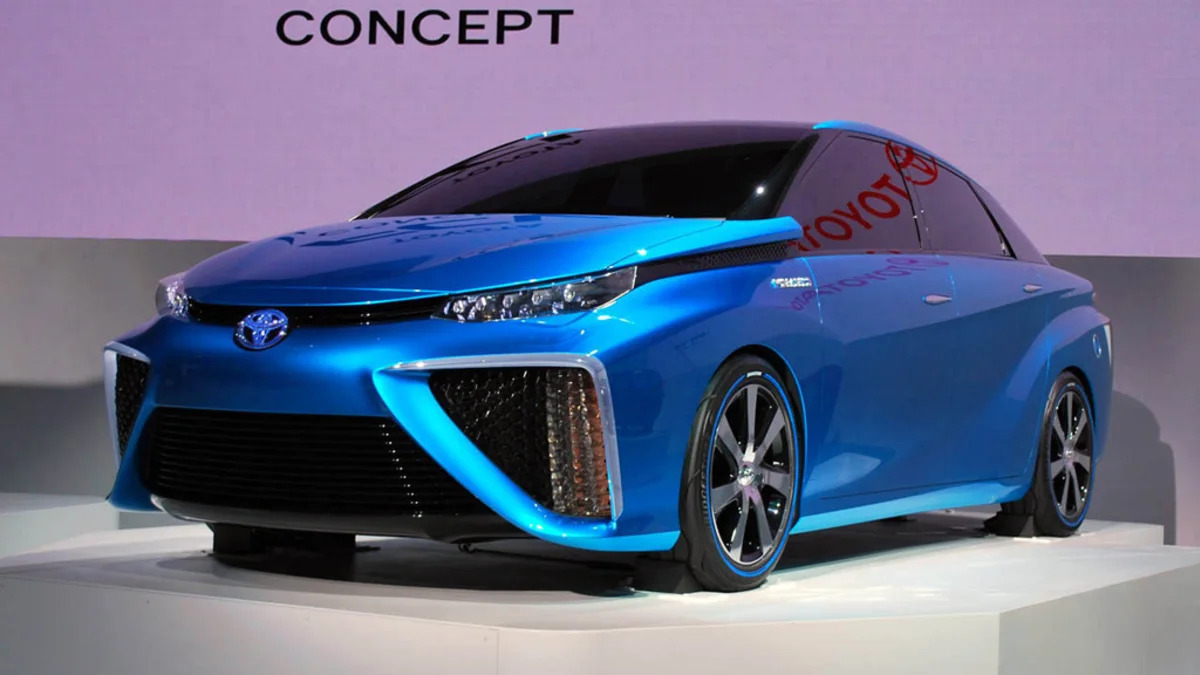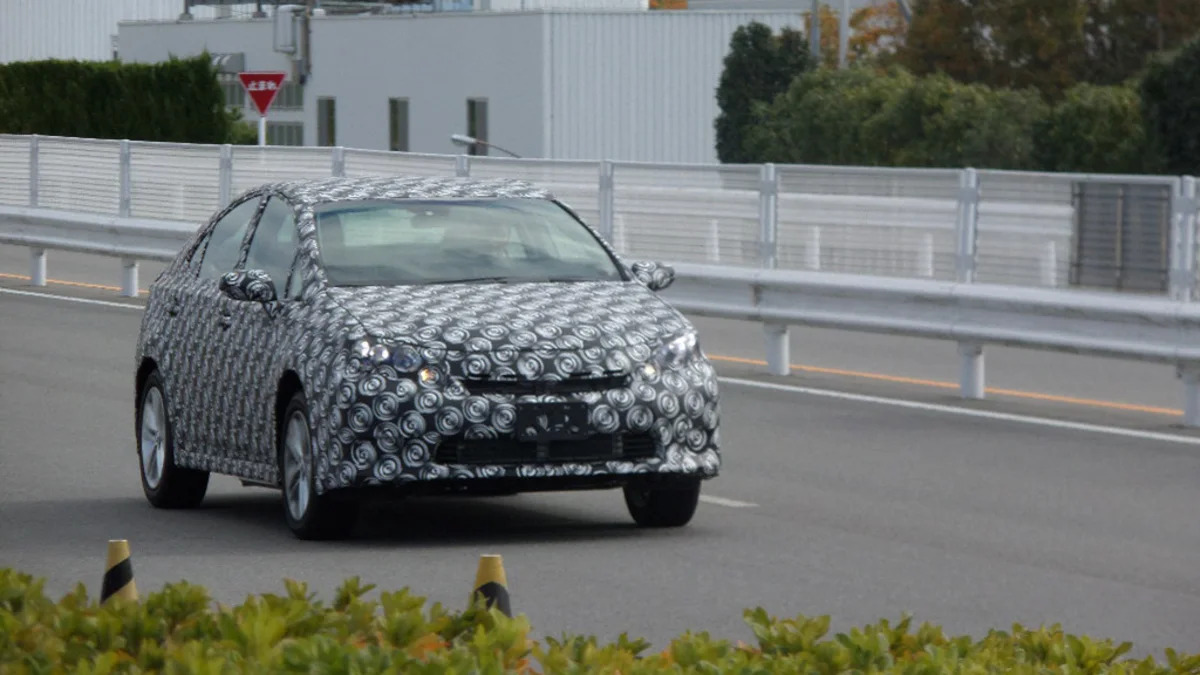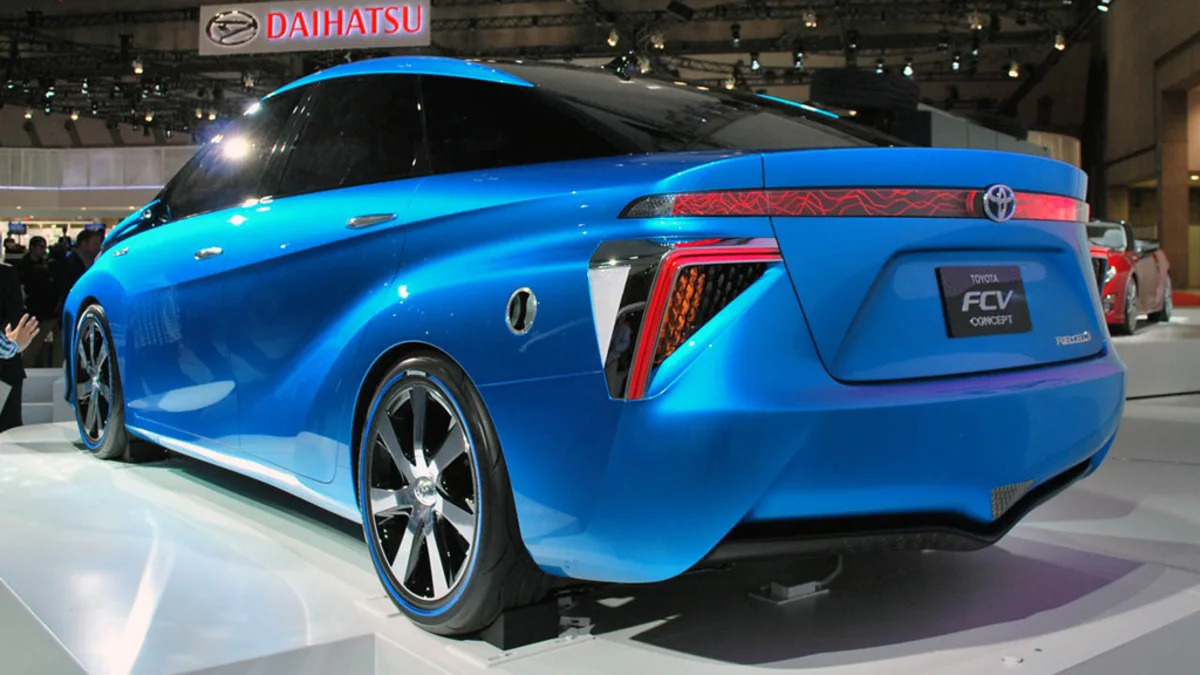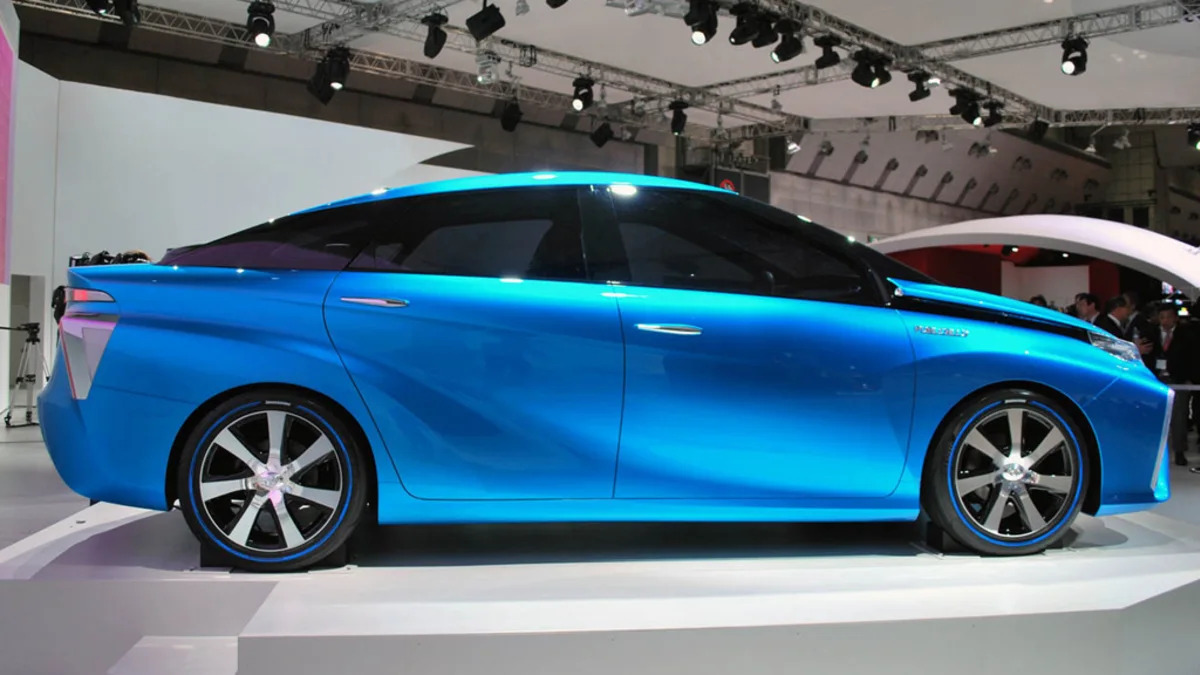AOL Autos Quick Spin: Toyota FCV Concept
Nov 26, 2013

-

- Image Credit: AOL
Hydrogen fuel cells are a promising clean technology. Several different automakers, including Honda, Hyundai and Toyota are racing to make vehicles available to consumers. Although pure electric vehicles have been available for some time now, these hydrogen-powered cars offer longer ranges and more conventional refueling.
Toyota is still a ways away from putting a hydrogen-powered car in dealerships -- it said it was shooting for a release date of "around 2015." However, I was fortunate enough to take a spin in a prototype at Toyota's test track in Toyota City, Japan. Read on for my thoughts on the new green machines. All in all, this is a promising new kind of powertrain, although it has some extremely tall barriers to mainstream acceptance. -
- Image Credit: AOL
What Is A Hydrogen Fuel Cell Vehicle?
This is a fairly new technology, so before we start talking about driving, here's a brief overview on how these vehicles work:
A fuel-cell vehicle is a type of electric vehicle. Like the Nissan Leaf and other EVs, it uses an electric motor to drive the wheels. But rather than draw electricity from heavy batteries that take time to recharge, a fuel cell generates electricity as needed by creating a chemical reaction using hydrogen and oxygen. The hydrogen is stored onboard the car in tanks as a compressed gas and the oxygen comes from the air. A fuel-cell vehicle can be refueled by pumping hydrogen into its tank at a hydrogen refueling station, similar to a regular gas station.
There are several benefits to powering a car this way. First, the only emission from the reaction is water. When you're driving a fuel cell vehicle, what comes out of the tailpipe is steam, not environmentally harmful carbon dioxide. Second, refueling takes only about three minutes. Battery-powered electric vehicles can take more than an hour. Finally, hydrogen is readily available, unlike the fossil fuels we are rapidly depleting, meaning we can power our cars this way for long into the future. -
- Image Credit: AOL
Driving The FCV
Driving Toyota's FCV prototype was much like driving some of the other EVs I've had the opportunity to test. It's quite fun. Almost all of the torque of the vehicle is available from a dead stop, meaning it accelerates very quickly. It's remarkably easy to spin the tires.
The FCV is well-balanced, making it easy to handle around sharp corners at higher speeds. The regenerative brakes, which help to power the battery, take some getting used to, as they're mushier than what we're used to in our cars, but they become an afterthought once you've engaged them a few times. The reason they feel different is that the system harnesses energy generated while braking in order to help power the battery.
The motor in the FCV was louder than I anticipated. This is likely due to the car being a prototype and not having proper sound insulation, but the high-pitched whine projected throughout the cabin and the air to those in the surrounding area had me rethinking the conventional wisdom that EVs are silent on the road.
The car I drove, as you can see here, was in full camouflage and was clearly not refined on the inside or out. I'm hoping Toyota will design the production model to look like the sharp concept that was on display at the auto show. Throw in a nice sound system, comfortable seats and some trunk space and I think that, all in all, this will be a very solid first attempt at a vehicle for our post-fossil fuel world. -
- Image Credit: AOL
Serious Challenges
I was impressed with the FCV after taking some laps around the test track, but it's impossible to ignore just how difficult it's going to be to introduce an entirely new type of vehicle to the marketplace.
The number one barrier is the cost of this technology. Although it may not look like it, Toyota has said that its goal is to keep the price of the FCV under $100,000 when it comes to market, with the final cost hopefully coming in closer to $50,000. That's a lot of money. Seeing how much the Chevrolet Volt, which isn't even as revolutionary of a concept, has struggled due to its price could mean the FCV will have trouble in the market, too.
There's also the issue of infrastructure. Do you know where your nearby hydrogen fueling station is located? According to a search on the Department of Energy's website, mine is 34 miles away. Building these refueling stations isn't cheap, and there's going to need to be a lot more of them if Toyota and other automakers want these cars to be a success. According to Toyota, simply starting one up can cost around $5 million. That doesn't even get into operational costs, which can run in the hundreds of thousands of dollars per year.
Financially speaking, introducing this car is a very, very tall order. -
- Image Credit: AOL
Bottom Line
Don't get me wrong. I'm excited about fuel cells. Powering our cars this way makes a lot of sense and although it's going to be a very rough road, I think as the cost of the technology comes down and infrastructure improves, we will see lots of these types of vehicles on the road.
I think the most important thing my brief time behind the wheel of the FCV showed was that driving a fuel-cell vehicle really isn't that different from driving a gasoline-powered one. They're easy to get used to, a little loud, can be easily refueled and are still quite a bit of fun.
It will be interesting to see how the FCV does when it comes to dealerships. Remember, there were a lot of haters when Toyota first launched the Prius. And I think we all know how that car worked out.



